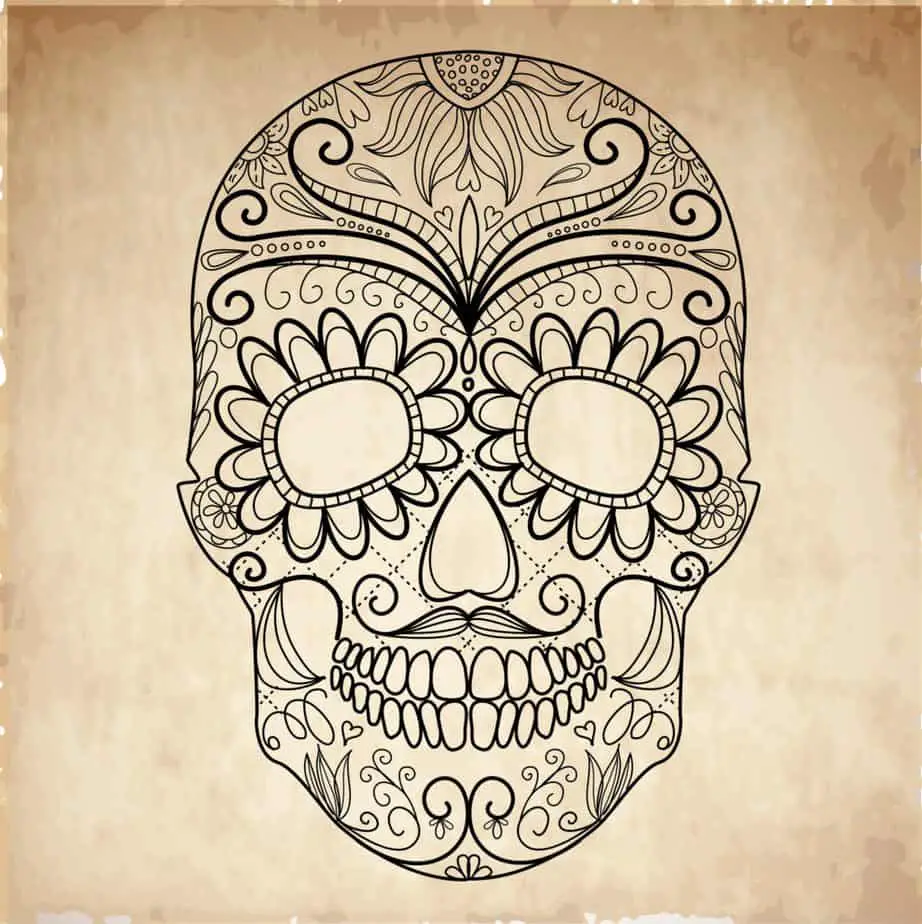
La Catrina, also known as La Calavera Catrina, Catrina La Calavera Garbancera translates to ‘Elegant Skull’, ‘Dapper Skeleton’ is renowned as it symbolizes the Day of the Dead – ‘Día de Los Muertos’ in Mexico. The article talks about its importance in the art and culture of many Spanish- speaking people.
Origin of La Catrina-
To understand the roots, from where La Catrina originated, we need to understand some basics of Aztec culture. The Aztecs celebrated death as a part of life’s cycle. According to the legend of Mictēcacihuātl (Lady of the dead)- the queen of the Aztec underworld of Chicunamictlan served the purpose of honoring the dead and protecting them. This is the same for the people of Mexico thus La Catrina was created to symbolize the relationship that Mexicans have with death. L Catrina and Mictēcacihuātl look very similar. The Día de Los Muertos is celebrated every year on 1st and 2nd November. It is said that in the early 1900s, José Guadalupe Posada, a Mexican political lithographer, and illustrator was the first to illustrate La Catrina. His illustration had a skull with a decorated hat over it.
The final look of La Catrina-
The Catrina we see today was then created by Diego Rivera- a renowned Mexican painter, who improvised Catrina’s look by drawing her full body along with the decorative clothes and ornaments. He was the first to illustrate the full-body portrait of La Catrina. Rivera took inspiration from the history of Mexico of the past 400 years and drew the final mural with Catrina along with himself, his wife Frida Kahlo- who was also a famous artist and his daughter in the center and all other famous historical figures, events, indigenous people on the side. The painting measured 15 meters long and is called ‘sueño de una tarde dominical en la Alameda central’ which means ‘Dream of a Sunday Afternoon in the Alameda Central’. The painting can be seen on the walls of Museo Mural Diego Rivera in Alameda Park, Mexico City.

Political and societal significance-
Posada drew her with a decorative hat that denoted the high class. During those days only the rich, high-class people wore hats. Placing the hat over a skeleton-faced skull representing faces displayed the fact that all return to death despite the class difference. La Catrina’s portrait directly tears down the difference in class or status, marking it of great political and societal importance. Posada was known for pinpointing serious crimes of the government through his illustrations. Many in Mexico were illiterate during those days. Thus what the newspapers were unable to convey, Posada’s political cartoons conveyed and made them aware of the corruption done by the government. Posada’s cartoons proved to be a clear slap on the government. Porfirio Díaz- the dictator over Mexico during Posada’s times encouraged foreign goods more than national produce. Soon the rich class started regarding the European aristocracy as a ‘better’ standard than the Mexican culture. The Government of Porfirio Díaz was later dispelled in the Mexican Revolution which took place in 1910.
How is La Catrina celebrated on Dia de Los Muertos?
1st and 2nd of November, on Día de Los Muertos day, is a government holiday in Mexico. Many go up to the gravesites of their loved ones and offer gifts, flowers, candles, clean and decorate the gravesites, place their favorite foods, recite their favorite songs, stories, or poems (Calavera literaria), etc thus paying homage to the dead. Some even create altars in remembrance of the dead. In Mexico, these altars are called ‘ofrendas’. Many dress up like La Catrina and paint their faces resembling her. Catrina is often referred to as a well-dressed skeleton figure, male skeletons are also made from ceramics, clay, paper mache to present at the altar made for the dead. As these days follow after Halloween, they are celebrated by making caricatures of the dead, painting La Catrina figures, making sugar skulls (Calaveras) according to the deceased’s personality, making ceramic skulls, thus knowing to respect and enjoy every phase of life. Children are taught to celebrate death instead of mourning as life’s every phase should be appreciated.
A special bread called ‘pan de muerto’ meaning ‘bread of the dead’ and ‘Tamales’ is also made. In some parts of Mexico, children dressed up as Catrina or some costumes with face paintings- go to different people’s doors to collect calaverita (money or small gifts in the form of candies, chocolates, etc). Some regions observe 1st November as a remembrance for the dead children and the following day for others. Although Dia de Los Muertos, covers a much broader motive other than La Catrina, she is remembered and forms the center of it.
La Catrina thus has deep significance in history, politics, art, as well as cultural context. Her portrays deeply conveys the message that we are the same and that this life is merely a phase to enjoy!
